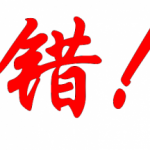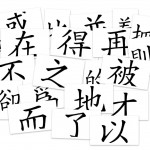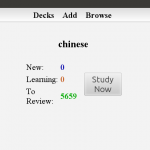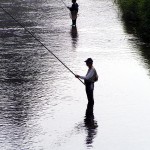Articles in the ‘Beginner’ category Page 30
-
Why good feedback matters and how to get it
Teachers give feedback in many different ways, some terribly bad, others very good. The bad ones let you struggle for hours just to correct your essay, not necessarily learning much on the way. The good ones not only allow you to correct your essay, you also feel that you’re learning a lot and won’t make the same mistakes again. This article sets down some guidelines for how to give good feedback, useful for both students and teachers.
Read → -
Sensible Chinese character learning challenge 2014
The 2014 sensible Chinese character learning challenge starts soon! This article introduces the challenge and how you join us. Apart from learning a lot of characters and improving the way you learn characters, you also get a discount and free extensions on Skritter, as well as a chance of winning character posters from Hanzi WallChart!
Read → -
Sensible Chinese character learning revisited
In a way, learning Chinese characters is very much like learning vocabulary in any foreign language and much of the efficient methods developed there works well for Chinese as well. However, characters are also fundamentally different from words in English and this influences how we should learn them as well. This article is a recap of how to learn Chinese characters in a sensible way. It is also a prologue for the upcoming character learning challenge.
Read → -
Asking the experts: How to learn Chinese grammar
How should we learn Chinese grammar? This article collects the best answers from more than 15 experts and experienced learners.
Read → -
Flashcard overflow: About card models and review directions
The question of how to design flashcards is faced by all learners who use them. What should you put on the front? What should you put on the back? Should you add single characters or whole words? Or perhaps sentences are better? The general answer is that it depends and this article discusses some of the factors the answers depend on.
Read → -
Learning how to fish: Or, why it’s essential to know how to learn
Learning how to learn Chinese is an essential skill for any student, regardless if you study on your own or in a course. This article explains why going to class is not enough.
Read → -
Two reasons why pronunciation matters more than you think
Good pronunciation matters, whether you like it or not. In general, students (and teachers) tend to stop caring about pronunciation much earlier than they should. You don’t need to aim for native-like pronunciation, but clear and easily-understood Chinese should be the goal of all students. In this article I present two arguments: one about the fact that pronunciation and communication are closely linked, one about how pronunciation reflects both you as a person and your other skills.
Read → -
Focusing on tone pairs to improve your Mandarin pronunciation
When learning to pronounce tones in Chinese, it makes sense to focus on words rather than single syllables. Most words in Mandarin are disyllabic and since practising these will also include tone changes (sandhi), focusing on tone pairs is recommended. This article gives you all HSK and TOCFL words, sorted by tone! First all [first tone] + [first tone], then all [first tone] + [second tone] and so on. This is great for students who need words to practise difficult combinations, but it’s also useful for teachers.
Read → -
Wuxia, a key to Chinese language and culture
Wuxia is something genuinely Chinese and is great for learning both about the culture and the language. in this article, Sara K. introduces wuxia to Chinese learners and explains what it is, why it’s relevant for learners and how to get started with wuxia if you find it interesting.
Read → -
Chinese reading challenge: Read more or die
You don’t read as much in Chinese as you should and January is the month that will change. The challenge starts on January 1st and the goal of reading as much as possible in Chinese in one month. This article contains not only more information about the challenge, but also lots of tips and tricks for reading (more) in Chinese!
Read →






